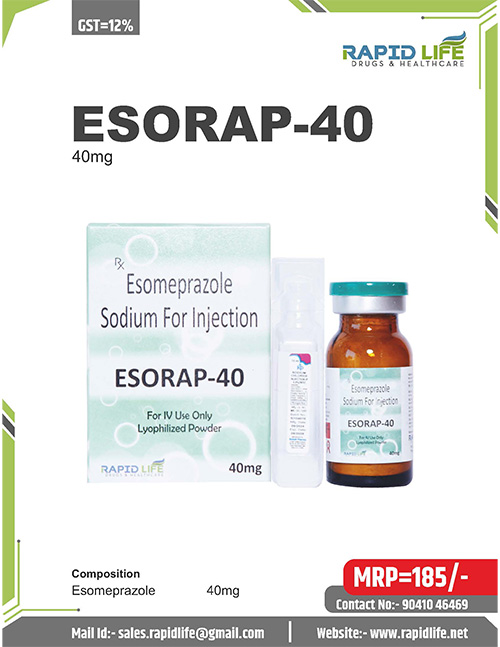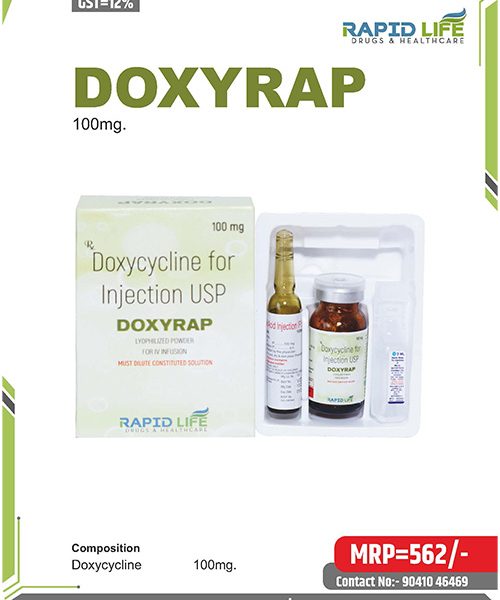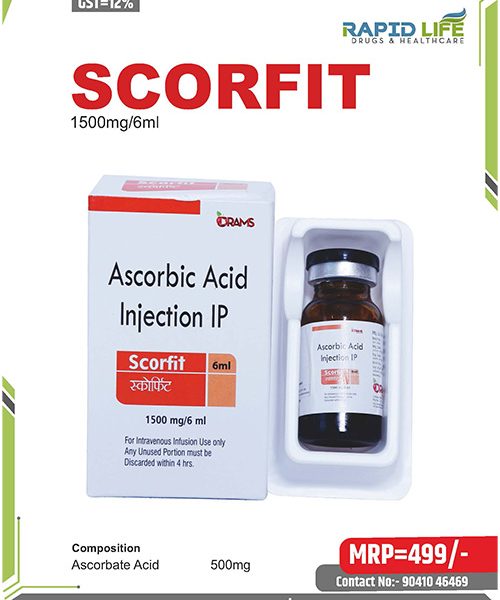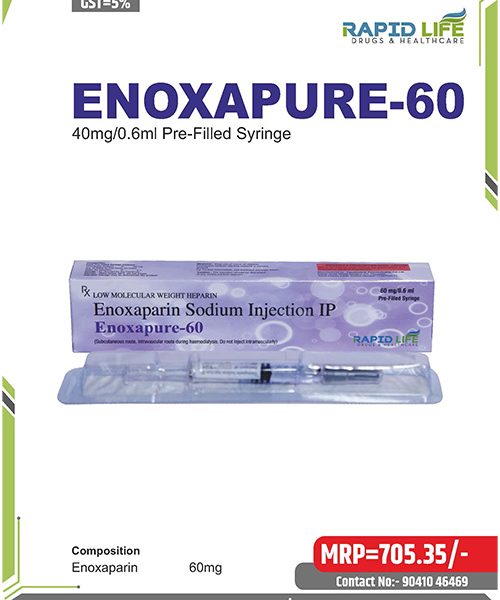Description
Esomeprazole Sodium Injection: Esomeprazole is employed to treat gastroesophageal reflux disease (GERD), stomach ulcers, Zollinger-Ellison syndrome (excess acid secretion caused by a pancreatic tumour), and gastric ulcers. It primarily prevents your stomach from producing less acid.
Esomeprazole contains esomeprazole, which helps reduce stomach acid by blocking the action of an enzyme (H+/K+ ATPase, also known as the gastric proton pump), thus preventing the release of stomach acid and relieving symptoms of heartburn.
Not all people taking Esomeprazole will experience these side effects. Esomeprazole can have general side effects, including headache, diarrhoea, nausea, abdominal pain, vomiting, dizziness, and joint pain. These side effects are transient and may disappear by themselves as time goes on. But if these side effects do not go away, don’t be afraid to call your doctor.
Medical Benefits:
- Esomeprazole is effective in the healing of heartburn, hyperacidity conditions, duodenal ulcers, gastric ulcers, and Crohn’s disease-associated ulcers.
- Esomeprazole may be prescribed to any age group, including special populations such as the elderly, pregnant, lactating women, and kidney and liver disease.
- Esomeprazole keeps acidity-related ailments under control, aids in digestion, and gives relief from the accompanying unease.
Uses:
- Esomeprazole is usually prescribed to facilitate the healing of the inflamed esophageal lining due to continued contact with stomach acid.
- Esomeprazole is also applied to treat Zollinger-Ellison syndrome, a condition that causes excess production of stomach acid.
- Esomeprazole prevents the development of peptic ulcers, especially in patients receiving prolonged NSAID therapy.
- Esomeprazole is occasionally part of combination therapy to eradicate Helicobacter pylori infection that causes peptic ulcers.
Directions To Use:
- Do not give it yourself.
- Press the skin between the index finger and thumb firmly, and do it quickly.
- Insert the needle into the muscle.
- Suck the back of the plunger; if blood comes into the syringe, withdraw the needle from the skin.
- Swap the needle with another of the same bore.
- You can give the already available drug in the syringe.
- Give the drug slowly.
Dosage:
Give this injection in the correct dose as instructed by your doctor. Don’t give the bigger mg of this drug.
Storage:
- Keep this medicine away from a cold and dry location.
- Do not keep this infusion exposed to sunlight.
- Keep this infusion out of the reach of children and pets.
Side Effects:
- Headache
- Diarrhoea
- Nausea
- Abdominal pain
- Vomiting
Precautions:
- It is a well-tolerated drug and gives relief for a long time.
- Tell your doctor if you develop watery diarrhea, fever, or persistent stomach pain.
- Over a long period of taking Esomeprazole, it may lead to weak bones and mineral deficiency, like magnesium. Maintain proper dietary calcium and magnesium intake or supplementation as advised by your physician.
- Immediately consult your physician if you have a decreased amount of urination, swelling (edema caused by fluid retention), lower back pain, nausea, weakness, rash, or fever. These may be symptoms of an issue with your kidneys.
- Esomeprazole must be administered 1 hour prior to a meal, ideally in the morning.
Frequently Asked Questions (FAQ):
Q. Is it okay if I take antacids with Esomeprazole?
Yes, antacids may be taken with Esomeprazole. Take it 2 hours before or after you have taken Esomeprazole.
Q. Should I discontinue Esomeprazole if I improve?
If you’ve been on Esomeprazole for an extended period, discontinuing it will cause more acid production, hence worsening your condition. Hence, you need to talk to your doctor regarding any changes in the dose or if you want to stop taking Esomeprazole.










